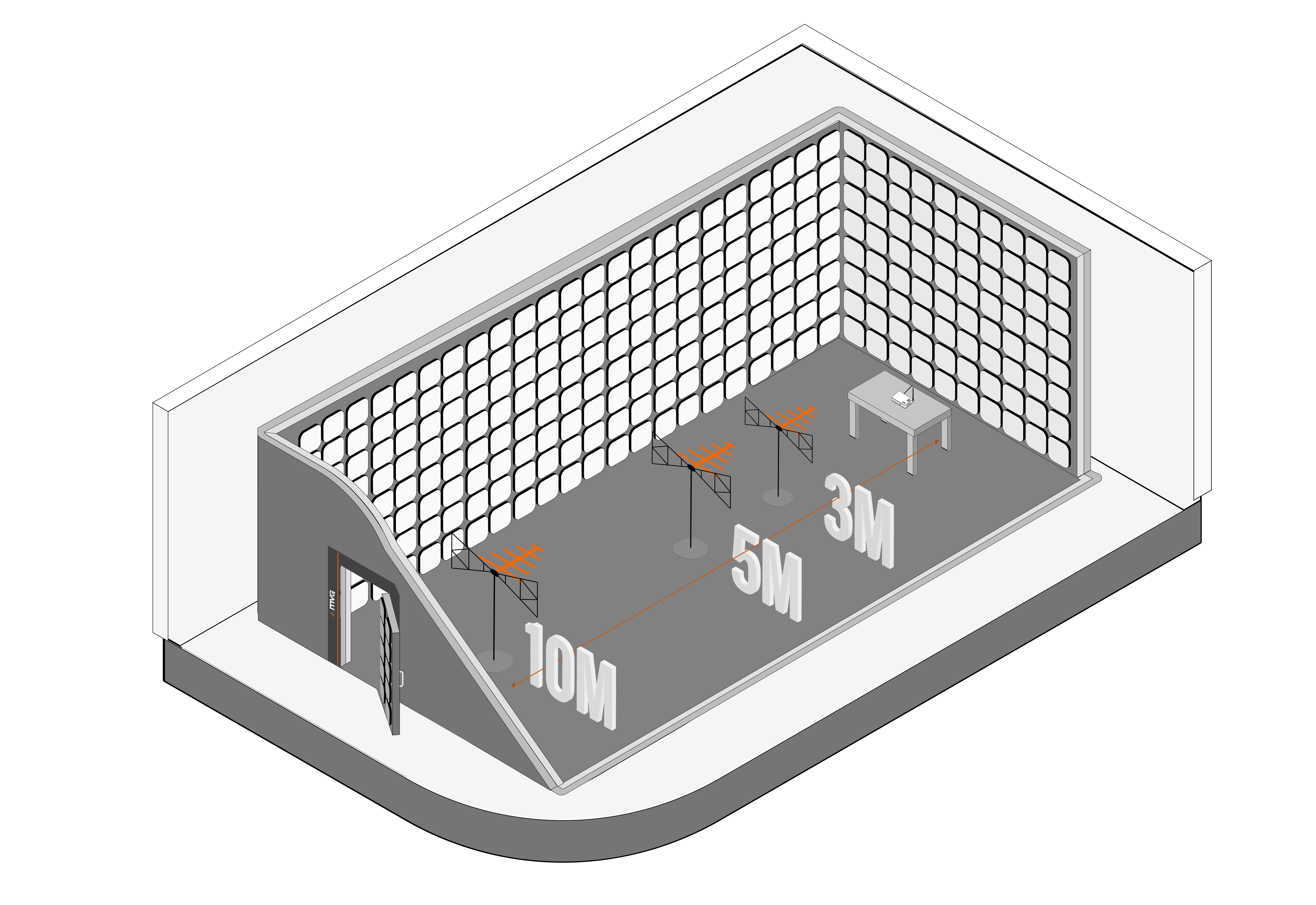There are many reasons for a business or laboratory having access to EMC testing tools. The main reason would be for precompliance testing of a business's products during development. Precompliance testing, is a catch-all term that is applied to all EMC testing that is done prior to official EMC testing. EMC testing must be performed by an accredited EMC test facility to very stringent standards. One of the main restrictions for full EMC testing is that the EMC test equipment and facility must be capable of achieving a measurement within +/- 4 dB of an ideal measurement. This is a challenging metric to meet, which is why most non-accredited test facilities are only capable of EMC precompliance testing that is helpful, and not entirely indicative of the full extend of EMC testing. Even without a 1:1 comparison, it is still helpful to perform precompliance testing, typically emissions testing, to weed out the more obvious issues. Moreover, some RF test equipment, such as an anechoic or semi-anechoic chamber with field measurement capability is extremely helpful for product testing beyond just EMC.
EMC Chambers

EMC test chambers are a specific type of semi-anechoic test chamber with a reflective base for the test device to sit on. The design and function of an EMC test chamber is very specific to EMC testing, and such a chamber isn’t ideally suited to other applications, such as antenna testing. However, it is possible to cover the reflective plate of an EMC chamber with absorber material to convert the semi-anechoic chamber into something closer to a fully-anechoic chamber, which are more often used for antenna and wireless device testing.
EMC chambers typically require an antenna separation of 3 m, 5m, or 10m to maintain the necessary spacing to ensure far-field radiation down to the minimum frequency (~30 MHz). The frequency range requirements of the chamber also influence the absorber material selection and other aspects of the chamber design. It is generally more challenging to physically design a EMC semi-anechoic chamber below 3m antenna separation while ensuring measurement accuracy, which is why most EMC chambers are generally larger than this, unless the products being measured are only high frequency devices, which may be possible to accurately measure within smaller chamber sizes.
To meet the necessarily low frequency shielding capability for EMC testing, EMC chambers often use a combination of ferrite tiles and hybrid absorbers. EMC chamber testing can go from several megahertz to 40 GHz, which is a significant range to ensure shielding compliance. The most common standards for compliance are CISPR, EN, and FCC requirements, though there are additional performance criteria for military, aerospace, space, and automatove standards that are often desirable.
EMC Probes/Antennas
Another key aspect of an EMC chamber for emissions and immunity testing is the EMC antenna. It is important for EMC testing for the test antenna to exhibit a wide bandwidth. With a wide bandwidth test antenna, a single test antenna can be used across all test frequencies, instead of having to change the test antenna over different frequency ranges. That being said, such a wide bandwidth antenna needs to have a very smooth/balanced gain across the entire frequency range to ensure measurement accuracy. Given physical constraints, for higher frequency testing, there is often a need for a higher frequency antenna to 40 GHz and a lower frequency antenna that reaches the lower frequency targets. The higher frequency antenna would only be needed for high frequency test devices. Given the near constant use of the test antenna, they also must be rugged and reliable to ensure constant up-time. Having to replace a test antenna would be a time consuming and costly replacement, as the measurement setup may need to be recertified.
EMC Test Equipment
Other than the EMC chamber itself and the test antenna, there are several other test equipment and accessories needed to perform EMC testing or quality precompliance testing. A spectrum analyzer or EMI receiver are useful pieces of test hardware to perform emissions testing. For EMC testing, it is important for the spectrum analyzer to have a quasi-peak detector feature, which is often an optional extra, and the appropriate resolution bandwidth (RBW) to match EMC measurement standards.
A signal generator and amplifier are needed for immunity testing. Outside of this, there are several pieces of RF hardware that are useful for interconnect and various test setups, this includes coaxial cable assemblies with the appropriate maximum operating frequency, and coaxial adapters.
Topic overview

